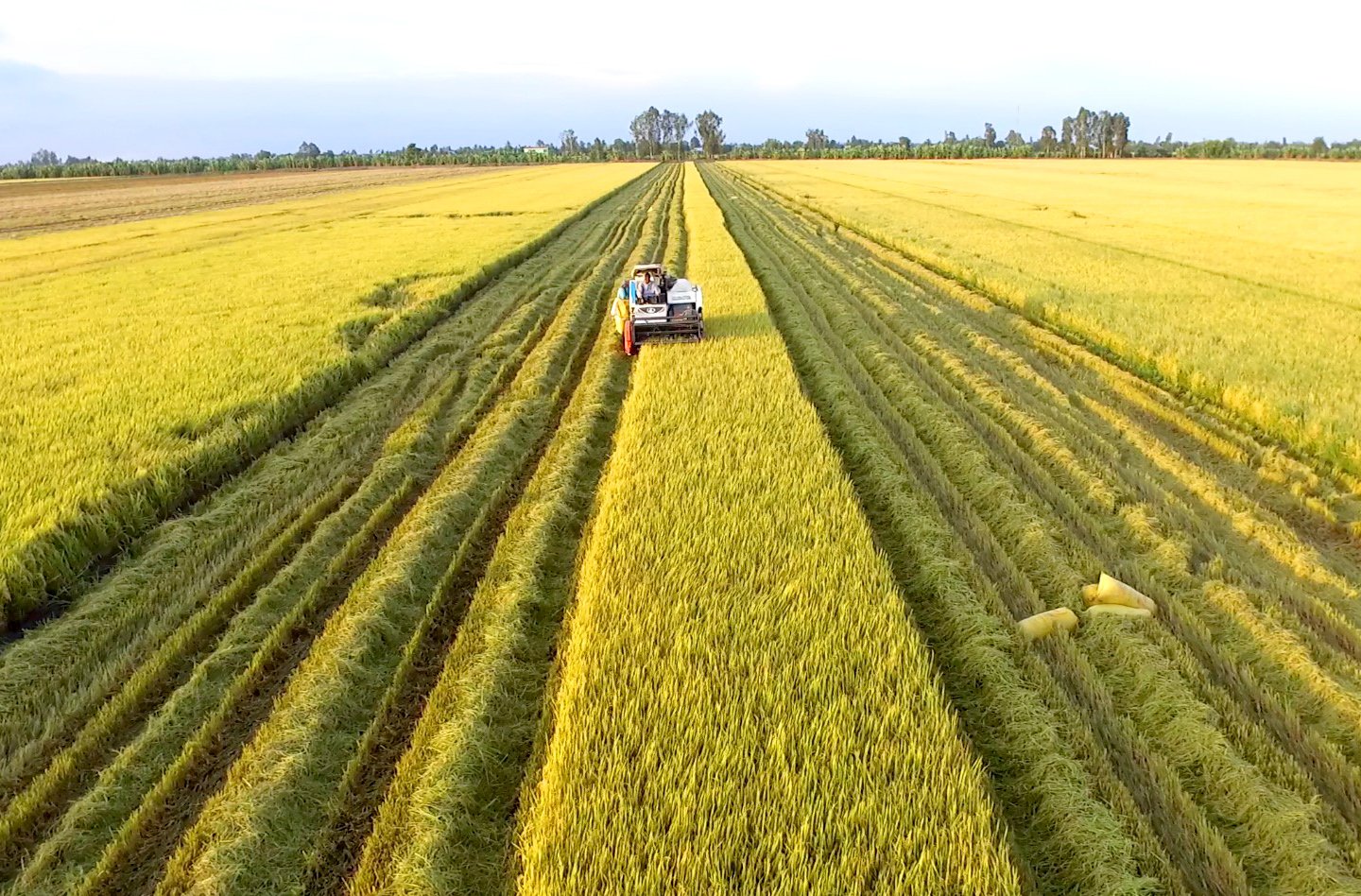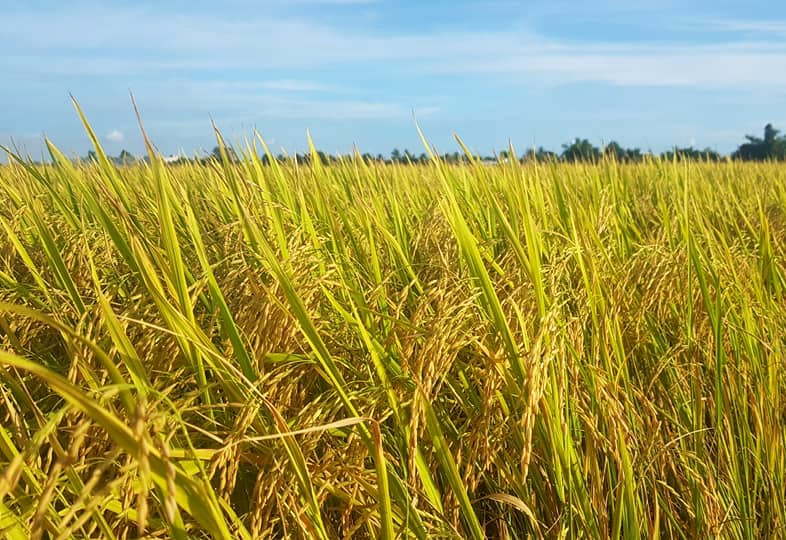May 28, 2025 | 07:25 GMT +7
May 28, 2025 | 07:25 GMT +7
Hotline: 0913.378.918
May 28, 2025 | 07:25 GMT +7
Hotline: 0913.378.918

Rice harvesting in a field in Long An province. Photo: Son Trang.
Compared to the previous year, the export of Vietnamese rice to Indonesia has shown significant growth in 2023. According to the General Department of Customs, only 50,000 tons of Vietnamese rice were exported to Indonesia in the first nine months of 2022, which is valued at 24 million USD. In contrast, Vietnam has exported 884,000 tons of rice to Indonesia in the first nine months of 2023, which is valued at 463 million USD.
Accordingly, Vietnamese rice exports to Indonesia have increased nearly 18 times in quantity and nearly 20 times in value compared to the same period in 2022. With the achieved turnover, Indonesia has surpassed China (858,000 tons in the first nine months of 2023) to become the second-largest market for Vietnamese rice, after the Philippines.
Indonesia's demand for rice imports continues to be substantial during the last three months of 2023. On October 8, 2023, the President of Indonesia, Joko Widodo, officially declared the necessity for an additional 1.5 million tons of rice to be included in the national strategic rice reserve by the end of 2023. This requirement is supplementary to the 2 million tons of rice that were previously imported since the beginning of the year. At the commencement of October 2023, Arief Prasetyo Adi, the Chairman of the Indonesian National Food Agency (Bulog), announced the government's plan to import an extra 1.5 million tons of rice by the end of 2023.
President Joko Widodo has attributed Indonesia's augmented demand for rice reserves to a combination of factors, with the most notable being the significant impact of El Nino on the country's agricultural productivity. On the other hand, the government seeks to secure additional rice in order to stabilize the fluctuating market prices for this staple commodity, which have demonstrated substantial increases within the last few months.
The Ministry of Agriculture of Indonesia outlined that, the country initially set a target to produce 54.5 million tons of paddy for the year 2023, which is equivalent to 32.07 million tons of rice. However, this projected production output is subject to revision due to the prevalent influence of El Nino on rice production and yields across numerous regions. Accordingly, the projected yields are expected to reach only 4 tons per hectare, in stark contrast to the regular yield of 5 to 6 tons per hectare. Furthermore, the operational capacity of several rice mills in Indonesia remained at between 20% and 30% during the month of August 2023.

A ripened rice field in Thu Thua district, Long An province. Photo: Son Trang.
A declining production rate has driven rice prices in the Indonesian market to rise substantially. The retail prices of rice in Indonesia, as of October 8, 2023, were reported as follows: 13,200 Indonesian Rupiah per kilogram (at an exchange rate of 1 USD to 15,400 IDR) for medium-grade rice and 14,920 IDR per kilogram for high-quality rice. These prices significantly exceed the government's regulated price range of 10,900 - 11,800 IDR per kilogram for medium-grade rice and 13,900 - 14,800 IDR per kilogram for high-quality rice. The inflation of rice prices in Indonesia for the month of September 2023 experienced an increase of 18.44% compared to the same period in 2023, marking the highest price level since 2014. In comparison to August 2023, rice prices in September 2023 increased by 5.61%, representing the highest increase since February 2018.
Vietnam stands as Indonesia's foremost supplier of imported rice. The Vietnamese trade office in Indonesia disclosed that Vietnamese rice constituted 47% of Indonesia's total rice imports during the first seven months of 2023. With its prominent position as a primary rice supplier, Vietnam is poised to remain a critical rice source if Indonesia proceeds with its plan of importing an additional 1.5 million tons of rice by the end of 2023. Consequently, Vietnamese rice exports to Indonesia are anticipated to reach the one million ton mark after a twelve-year interval.
Whereas rice production and output in several Asian countries have been adversely affected by unfavorable weather conditions, the production and output of rice in Vietnam, especially in the Mekong Delta region (which accounts for over 90% of rice exports), remain stable.
At the Conference on the Summary of Agricultural Production in 2023 and the Implementation of the Winter-Spring Crop Plan for 2023-2024 in Long An, which is one of the largest rice-producing provinces in the Mekong Delta region, Mr. Nguyen The Truyen, Director of the Long An province's Department of Agriculture and Rural Development, reported that the province achieved a rice output of 3.048 million tons in 2023, which is an increase of 186,967 tons compared to that of 2022. Accordingly, this total yield includes over 1.8 million tons of high quality rice. Additionally, this represents the highest rice output level recorded for Long An province and considerably exceeds the set target of 2.7 million tons.
Translated by Nguyen Hai Long
/2025/05/25/4127-3-073637_820.jpg)
(VAN) Thanks to the promotion from an FAO-implemented project, vegetable production in greenhouses in Moc Chau has seen strong development, from 1.5 hectares in 2021 to nearly 50 hectares in 2024.

(VAN) FAO has recently supported USD 140,000 to implement the project 'Risk mitigation human-animal interface risks through disease control initiatives in pig farming.'

(VAN) The People's Committee of Tra Vinh province has approved an adjustment to the investment policy for the Green Hydrogen Plant project, increasing its area to approximately 52.76 hectares.
![Reducing emissions from rice fields: [2] Farmers’ commitment to the soil](https://t.ex-cdn.com/nongnghiepmoitruong.vn/608w/files/news/2025/05/05/dsc08881jpg-nongnghiep-140632.jpg)
(VAN) Clean rice cultivation model in Thuong Tan commune, Bac Tan Uyen district, is assisting local residents in achieving sustainable agriculture by substantially reducing costs, increasing productivity, and protecting the environment.

(VAN) At the conference to disseminate Resolution No. 68, AgriS introduced its digital agricultural ecosystem and reaffirmed its commitment to accompanying the Government in promoting private sector development and sustainable agriculture.

(VAN) 'Blue Ocean - Blue Foods' initiative is designed to restore marine ecosystems and establish sustainable livelihoods for local communities by cultivating a minimum of 1,000 hectares of cottonii seaweed in the first three years.
/2025/05/21/4642-3-112707_603.jpg)
(VAN) The V-SCOPE project has made direct contributions to three out of six pillars of the Comprehensive Strategic Partnership between Vietnam and Australia.